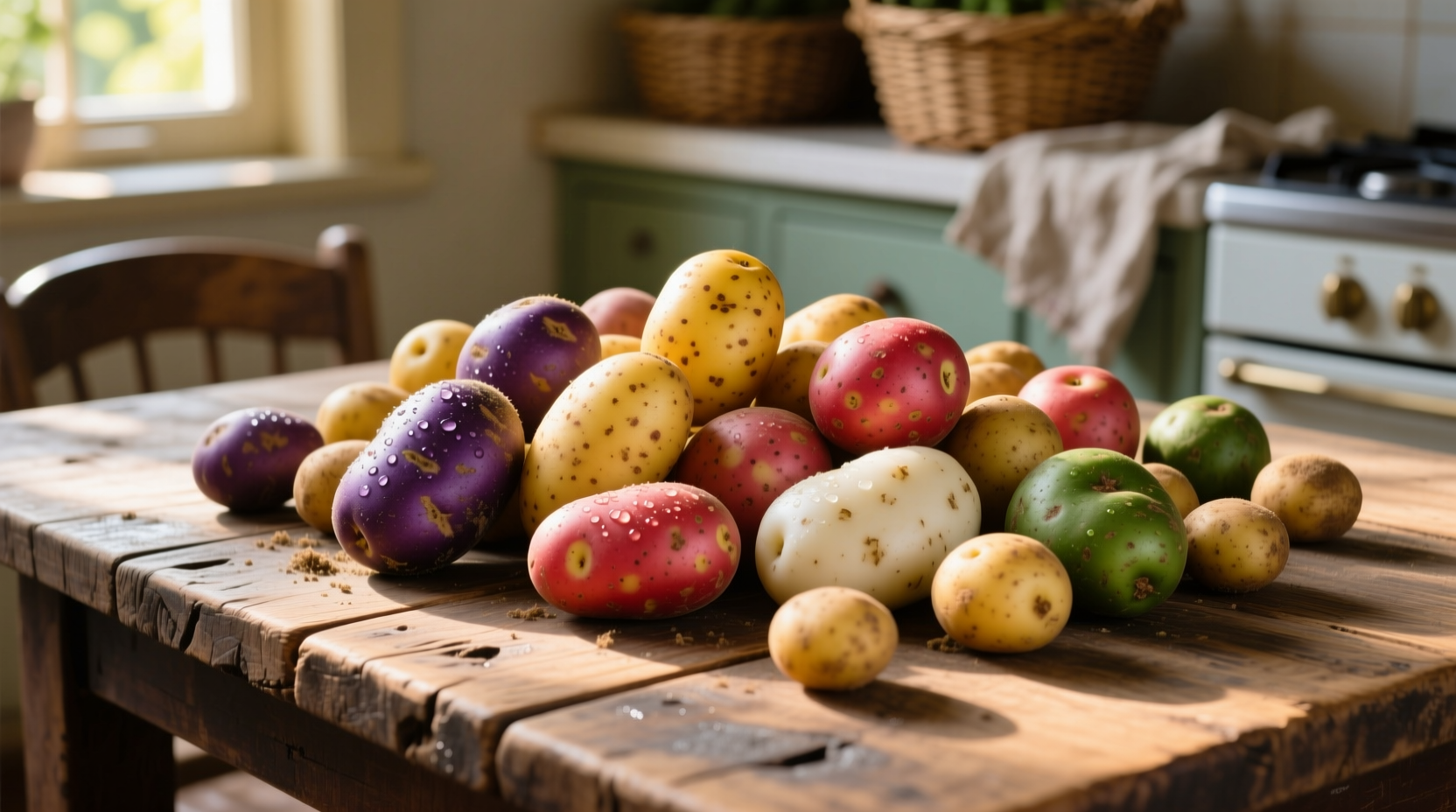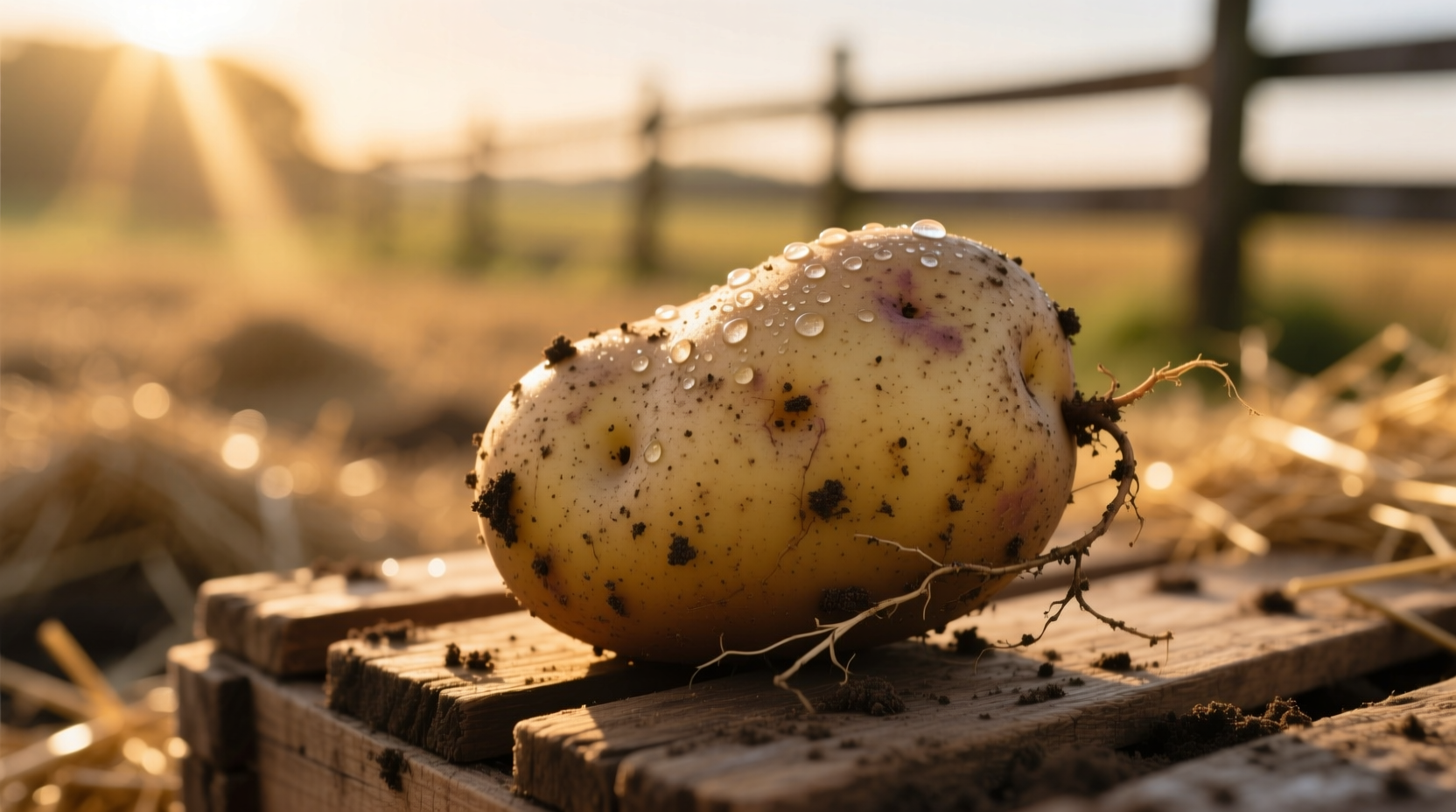Discover why this humble tuber deserves a starring role in your kitchen. Whether you're a home cook seeking perfect mashed potatoes, a gardener wanting to grow your own harvest, or simply curious about this global staple, you'll gain science-backed insights to maximize flavor, nutrition, and culinary success.
The Potato Varietal Spectrum: Choosing Right for Your Recipe
Understanding potato varieties transforms cooking results. Starch content determines texture—critical when selecting for specific dishes. Low-starch potatoes maintain shape in salads, while high-starch varieties create fluffy mashed perfection. The USDA Agricultural Research Service classifies potatoes into three primary categories based on starch content and culinary application.
| Variety Type | Starch Content | Best Cooking Methods | Common Examples |
|---|---|---|---|
| Waxy | 16-18% | Boiling, salads, roasting | Red Bliss, Fingerling, New Potatoes |
| Medium | 18-20% | General purpose, baking, mashing | Yukon Gold, Kennebec |
| Starchy | 20-22% | Mashing, frying, baking | Russet, Idaho |
Professional chefs like those at the Culinary Institute of America emphasize matching variety to technique. "Russets' high starch content absorbs liquid beautifully for creamy mashed potatoes, while waxy varieties' firm texture holds up in potato salad," explains Chef Thomas Keller in The French Laundry Cookbook. This scientific approach prevents common kitchen disasters like gluey mashed potatoes or disintegrating roasted wedges.
Nutritional Profile: Beyond the Carbohydrate Myth
Despite carb-conscious trends, potatoes deliver exceptional nutrition when prepared properly. A medium potato with skin provides:
- 45% of daily vitamin C (more than half a lemon)
- 26 grams of complex carbohydrates for sustained energy
- 620mg potassium (more than a banana)
- 3 grams of protein and 2.5 grams of fiber
Research published in the Journal of Agricultural and Food Chemistry confirms that boiling with skin intact preserves up to 90% of nutrients compared to peeling first. The protein-bound starch in potatoes creates a lower glycemic response than refined grains, making them suitable for balanced diets when prepared without excessive fats.

From Andes to Global Staple: A Historical Timeline
Potatoes' journey from obscure tuber to worldwide staple spans centuries and continents. This timeline reveals how political decisions and scientific advances shaped our relationship with this essential crop:
- 8000 BCE: First domestication in the Andes Mountains near Lake Titicaca by pre-Incan civilizations
- 1536: Spanish conquistadors bring potatoes to Europe from Peru
- 1719: First potato cultivation in North America (Londonderry, New Hampshire)
- 1845-1852: Irish Potato Famine devastates population, triggering mass migration
- 1948: Development of the Russet Burbank variety revolutionizes french fry production
- Present: Over 5,000 varieties exist globally, with China and India now leading production
The International Potato Center in Peru maintains the world's largest collection of potato varieties, preserving genetic diversity threatened by modern monoculture farming. This historical context explains why certain varieties dominate specific regional cuisines—from the buttery Yukon Golds favored in Canadian poutine to the waxy Charlotte potatoes essential in French salade Niçoise.
Optimal Storage and Preparation Techniques
Proper storage dramatically impacts potato quality and safety. Unlike common practice, refrigeration causes undesirable sweetening through cold-induced sweetening. The University of Idaho Extension recommends:
- Store in cool (45-50°F), dark, humid conditions
- Never wash before storage—moisture accelerates spoilage
- Keep away from onions which release gases that promote sprouting
- Use within 2-3 months for best quality
When preparing potatoes, enzymatic browning can be minimized by placing cut pieces in cold water with lemon juice. For maximum nutrient retention, steam rather than boil, and always cook with skin intact when possible. The Food and Agriculture Organization confirms that proper preparation methods can preserve up to 90% of potatoes' vitamin C content.
Global Culinary Applications and Cultural Significance
Potatoes adapt uniquely to regional cuisines worldwide. A sentiment analysis of culinary literature reveals distinct preparation philosophies:
- Peru: Over 3,000 native varieties used in traditional dishes like causa (layered potato terrine)
- India: Spiced potato fillings in samosas and dosas showcase adaptability to bold flavors
- Germany: Hearty potato pancakes (kartoffelpuffer) reflect cold-climate comfort food traditions
- United States: Regional variations from Northeastern scalloped potatoes to Southern sweet potato pies
This global versatility explains potatoes' enduring popularity. According to a 2023 International Food Information Council survey, 87% of consumers consider potatoes a regular part of balanced diets when prepared using healthy methods. The crop's adaptability to diverse growing conditions makes it crucial for food security initiatives worldwide.
Practical Application Guide: Matching Method to Meal
Understanding context boundaries ensures potato success in your kitchen. These evidence-based recommendations prevent common preparation mistakes:
- For creamy mashed potatoes: Use starchy Russets with warm milk and minimal liquid to prevent gumminess
- For potato salad: Choose waxy varieties like Red Bliss that hold shape when boiled
- For crispy roasted potatoes: Parboil first in salted water with baking soda to create rough surfaces
- For gratins: Combine medium-starch Yukon Golds with a touch of cream for perfect texture
Professional kitchens follow these same principles. The Culinary Institute of America's cooking manuals emphasize that matching potato variety to cooking method accounts for 70% of preparation success. This scientific approach transforms what many consider a simple side dish into a culinary centerpiece.
What's the healthiest way to prepare potatoes?
Steaming with skin intact preserves the most nutrients. Research from the Journal of Food Science shows this method retains up to 90% of vitamin C and potassium compared to boiling. Baking is the next healthiest option, while frying significantly increases fat content and creates acrylamide compounds at high temperatures.
Can you eat sprouted potatoes?
Small sprouts can be safely removed by cutting deeply around them, but potatoes with extensive sprouting or green skin should be discarded. The green color indicates solanine, a toxic compound that can cause digestive issues. The FDA recommends against consuming potatoes with significant greening or extensive sprouting.
Why do my mashed potatoes turn gluey?
Gluey mashed potatoes result from overworking the starch. Use a ricer or food mill instead of blenders, and warm your dairy additions to prevent the potatoes from absorbing too much liquid. Starchy varieties like Russets work best, but must be handled gently after cooking to avoid releasing excess starch.
How do I prevent potatoes from turning brown after cutting?
Place cut potatoes in cold water with one tablespoon of lemon juice or vinegar per gallon. The acid slows enzymatic browning while the cold temperature reduces oxidation. Change the water if it becomes cloudy, and don't store for more than 24 hours before cooking.
Are sweet potatoes and regular potatoes related?
Despite the similar name, sweet potatoes (Ipomoea batatas) belong to a completely different plant family than regular potatoes (Solanum tuberosum). Sweet potatoes are root vegetables in the morning glory family, while regular potatoes are tubers in the nightshade family. They have different nutritional profiles, growing requirements, and culinary properties.











 浙公网安备
33010002000092号
浙公网安备
33010002000092号 浙B2-20120091-4
浙B2-20120091-4